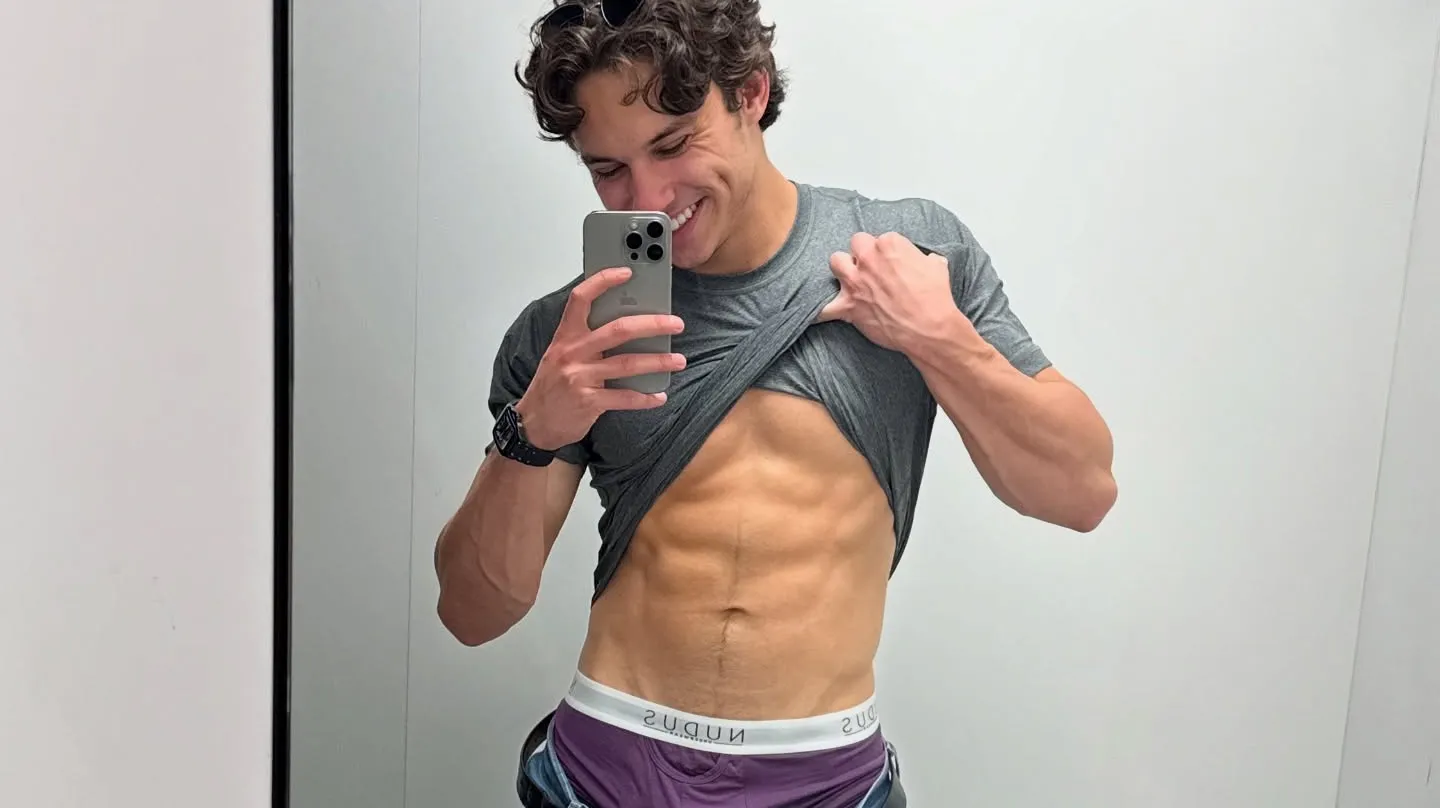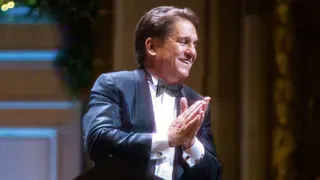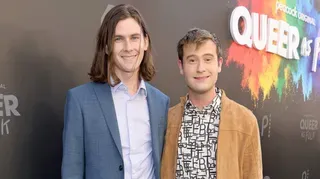October 4, 2023
Author Laurence Leamer on Hitchcock's Blondes and Capote's Women
Steve Duffy READ TIME: 9 MIN.
There may not be a more celebrated dysfunctional relationship in Hollywood history than that between Alfred Hitchcock and some of his leading ladies pegged Hitchcock's Blondes. The moniker is so familiar that it is the title of Laurence Leamer's new book, "Hitchcock's Blondes."
Hitchcock became fascinated – obsessed even – with his glamorous leading ladies during the 1950s.But according to Leamer, the first Hitchcock Blonde is, Ingrid Bergman who starred in a pair of Hitchcock's most celebrated 1940s films, "Spellbound" and "Notorious." (Their third film together, "Under Capricorn," was not a success.) But the meme wouldn't reach fruition until the mid=1950s when Hitchcock cast Grace Kelly in three films -- "Dial M for Murder" "Rear Window," and "To Catch a Thief" prior to her retirement from film after marrying Prince Ranier of Monaco.
While Kelly is considered the ideal Hitchcock Blonde, he sought substitutes in the ensuing decade with Kim Novak in "Vertigo" and, problematically, Tippi Hedren in "The Birds" and "Marnie." How that relationship became toxic has been discussed by Hedren in recent years and became the basis for a HBO biopic, "The Girl" in which Sienna Miller played Hedren and Toby Jones played Hitchcock.
"In "Hitchcock's Blondes," bestselling biographer Laurence Leamer offers an intimate journey into the lives of eight legendary actresses whose stories helped chart the course of the troubled, talented director's career–from his early days in the British film industry, to his triumphant American debut, to his Hollywood heyday and beyond," reads the book's press release.
Leamer is also the author of "Capote's Women," the book that looks at the troubled relationship between Truman Capote and the coterie of New York society women he befriended and, later, betrayed when he published "Answered Prayers," a section of an unfinished novel in which he revealed personal details of their lives. The book is the basis of the upcoming season of Ryan Murphy's "Feud," entitled "Capote's Women," shortened from Leamer's title "Capote's Women: A True Story of Love, Betrayal, and a Swan Song for an Era," The upcoming mini-series was adapted by playwright and showrunner showrunner Joan Robin Baitz and directed by Gus Van Sant. It stars Tom Hollander as Capote, Naomi Watts as Babe Paley, Chloë Sevigny as C. Z. Guest, Diane Lane as Slim Keith, Demi Moore as Ann Woodward, Molly Ringwald as Joanne Carson, and the late Treat Williams as Bill Paley.
EDGE spoke to Leamer about Hitchcock's blondes and Capote's women.
EDGE: Please briefly describe "Hitchcock's Blondes."
Laurence Leamer: My book is a story of the great director's relationship with eight actresses. He was obsessed with blondes, especially with Grace Kelly, Kim Novak, Ingrid Bergman, and Tippi Hedren. He made some of the greatest films of all time, but he put them through a lot of hell. That's what he liked to do to women overall, but particularly to blonde women.
EDGE: How did you become interested in this story?
Laurence Leamer: I mean, it's Hitchcock. He made over 40 films. This guy is unique. He operated in the commercial center of filmmaking. He didn't think he was making immortal films. He just thought he was making great entertainment, but he ended up making these amazing immortal films.
EDGE: Do you have any rules or guidelines for writing nonfiction?
Laurence Leamer: I don't know if I have any rules, but I always try to think of the end of the book. I want to make sure that the ending is going to work. This book ends in 1979 with Alfred receiving the AFI Life Achievement Award. He was far gone at that point and his wife had a stroke, but somehow, she attended the event. He seemed out of it. He didn't look up, no smiles, and no appreciation for all the tributes. Ingrid Bergman, who was the master of ceremonies, ended the tribute with a story. When they were making "Notorious," there was a key, and it was called McGuffin. The key was the crucial plot to drive the story. The key that was used for the wine cellar where the atomic material was kept. She said when the film was over Cary Grant got the key and he kept it for 10 years and then he gave it to me, and I've had it for 10 years and it's has given me good luck and now Hitch I'm giving you the key, so you'll have good luck. With that, the audience stood up and for the first time, Hitchcock stood up. She made her way to him and when she got there, she hugged him. He didn't like to be hugged, but he liked it that time. He hugged her back and I can say that he was embracing not just her, but life itself.
EDGE: In your research on Hitchcock, were there any particular facts that surprised you?
Laurence Leamer: The one thing that I found interesting was he once said that if he had not married Alma, who was his wife of 50 years, he would have likely been a puff., which is British slang for gay. In his films, he always had characters that seemed like they could be gay, and he made them evil. In his 1936 film, "Secret Agent," Peter Lorre is supposed to be gay. It doesn't say gay on his shirt, but it is shown in the way he behaves. "Rope" is a film based on Nathan Leopold and Richard Loeb, the two brilliant gay Jewish students at the University of Chicago, who killed a student to prove their superiority. Marty Landau, who played one of the villains in "North by Northwest" said he was going to play him outrageously gay, and Hitchcock loved the idea. In "Psycho," Tony Perkins plays a character based on Wisconsin serial killer Ed Gein, who was gay. Nobody positive was gay in his films.
EDGE: When it came to Hitchcock choosing an actress was the only criteria being blonde?
Laurence Leamer: Not really, but with Tippi, he saw her on the Today's show. She was a model in an ad on the show. He liked her, so he signed her to a contract with no acting experience and starred her in "The Birds."
EDGE: Out of the eight actresses, three are still with us – Eva Marie Saint, Kim Novak, and Tippi Hedren. Were you able to speak to or get a statement from them?
Laurence Leamer: I spoke to Eva Marie Saint and to Kim Novak. I called Eva Marie Saint out of the blue and we had a lovely conversation. She's 99 years old and lives by herself in an apartment on Wilshire Boulevard in Los Angeles. Her daughter got upset because she didn't want it to be said that she was living there as if the daughter didn't love her. Well hell, when I'm 99, if I'm living by myself, it's not because my daughter doesn't love me. I think it's great that she lives alone, and she was just fabulous. I interviewed Kim Novak who had suffered from bipolar all her life. We talked about her health struggles and a lot of other things. She was a great actress and never got the credit she deserved. She should have gotten an Academy Award nomination for her role in "Vertigo."
EDGE: Of all the Hitchcock's Blondes, who are you most fascinated with?
Laurence Leamer: It would be Grace Kelly. First of all, she looked so ethereal. She looks like she never had sex in her life, but she was sleeping with everybody. She had a lot of lovers, and then she made what I think is an enormous mistake by marrying Prince Rainier III. She didn't even know him. He comes to visit her at her house on Christmas, her parents are there, and they go into a the back room and have sex. He comes out of the room and his suit is all messed up and four days later she agrees to marry him. She was a brilliant actress, and she could have become one of the greatest actors of our time if she hadn't gone off and lived the rest of her life inside his castle.
EDGE: Ryan Murphy's upcoming second season of Feud is based on your recent book, "Capote's Women." Is this your first foray into television?
Laurence Leamer: Yes. Many of my things have been optioned, but this is the first one to get made. Ryan Murphy is amazing, and he gets things done. Most things end up in development hell, but when he's going to do something, he does it. I was on the set for one day, and it's just going to be unbelievable. It's the cover of Town and Country this month. It's just beautiful. It is really going to be something.
EDGE: How much involvement did in bringing Capote to the screen?
Laurence Leamer: They don't want the authors to have any involvement, but I was on the set for a day. They were filming the Black and White Ball, which was Capote's famous 1966 party. It was supposed to be filmed at the Plaza Hotel where it took place, but it didn't work out, so the filming happened at the Polish Consulate, which is on Fifth Avenue and 38th. When I got there, they took me upstairs and put me in the director's chair. As I am sitting there this guy comes walking up to me, he's wearing jeans and a cowboy. He looks like he just got off his horse. He says, "Hi, I'm Gus" and I say, "Hi, I'm Larry. What do you do, Gus? He says, I'm Gus Vann, I'm the director.
EDGE: Who do you have your sights set on next?
Laurence Leamer: I'm writing about Andy Warhol. I have all this absolute and fabulous material. I have unprecedented material. It's going to change the way people think about him.







